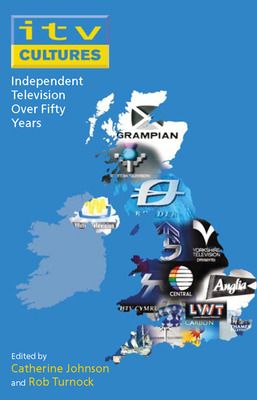ITV Cultures: Independent Television Over Fifty Years
Receive via shipping:
- Colour, print bound version of the complete text
Part 1: Histories
From Start-up to Consolidation: Institutions, Regions and Regulation in the History of ITV
A Prodigious Act of Memory: What Would an ITV Canon Look Like?
And the Rest is History: Lew Grade, the Creation Myth and Television Historiography
Part 2: Institutions
The Transatlantic Adventures of British Television in the 1950s: Funding, Production, Programmes, Formats and the 'Official' History of ITV
Mammon’s Television? ITV in Wales, 1959-63
From Newsreels to a Theatre of News: The Growth and Development of Independent Television News
LWT in the 1980s: Factual Programmes, Public Service Obligations, Financial Incentives
Part 3: Texts and Intertexts
Channeling Celebrity: ITV and the Construction of Television Fame
Rooms Within Rooms: Upstairs Downstairs and the Studio Costume Drama of the 1970s
Who Wants to be a Fan of Who Wants to be a Millionaire? Television Criticism, “Popular Aesthetics” and the Question of Fan/Academic Tastes
Real People with Real Problems'?: Public Service Broadcasting, Commercialism and Trisha
Conclusion
Historical Timeline: The ITV Companies and the Broadcasting Acts
Index
Professor Jean Seaton, University of Westminster
“This is a valuable addition to studies of ITV's history andprogramming...”
Tom O'Malley, Professor of Media Studies, University of Wales, Aberyswyth, and Co-Editor of Media History.
The book explores key tensions and conflicts which have influenced theITV service. Chapters focus on particular institutions, includingLondon Weekend Television and ITN, and programme forms, includingWho Wants to be a Millionaire?, Upstairs Downstairs and Trisha.The contributors show that ITV has had to tread an uneasy line betweenpublic service and commercial imperatives, between a pluralistic regionalstructure and a national network, and between popular appeal andquality programming. A timeline of key events in the history of ITV is alsoincluded.
ITV Cultures provides a timely intervention in debates on broadcastingand cultural history for academics and researchers, and a livelyintroduction to the history of ITV for students and general readers.
Contributors: Rod Allen, City University; Jonathan Bignell, University of Reading; John Ellis, Royal Holloway, University of London; Jackie Harrison, University of Sheffield; Jamie Medhurst, University of Wales, Aberystwyth; Matt Hills, Cardiff University; Steve Neale, University of Exeter; Helen Wheatley, University of Reading; Sherryl Wilson, Bournemouth University.

